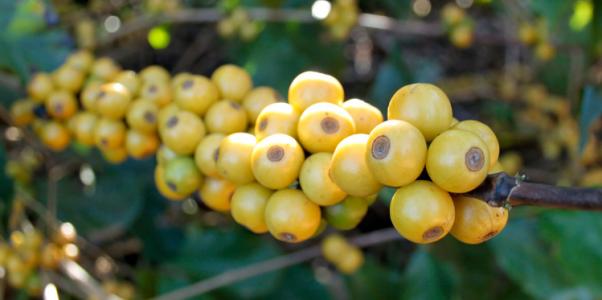The characteristics and stories of Panamanian Cupid Coffee beans that taste like tea
A brief introduction to the characteristics and taste of Panamanian Cupid coffee beans
Panama has one of the highest volcanoes in Central America: Mount Baru. The Baru volcano has an altitude of more than 3474 meters, and the surrounding land is nutritious and balanced, providing sufficient conditions for the sowing and cultivation of Panamanian coffee. Cold air streams converge and flow above 2262 meters in the Central Mountains, creating a variety of microclimates in the Bouquete and Volcan regions. The microclimate of the Panamanian highlands, as well as fertile soil, abundant precipitation, suitable temperature and height, have become a unique resource for the cultivation of quality coffee in Panama.
Panama Coffee is grown in the western part of the country, near Costa Rica and the Pacific Ocean. The Boquet district of Chiriqui province is the most famous for its coffee, and Vocan,Santa Clara is also famous. Other areas include David, Remacimeinto, Bugaba and Tole. Only coffee grown at elevations between 1300 and 1500 meters above sea level is considered special coffee.
The first batch of coffee exported by Panama each year starts in November, and almost all high-quality coffee beans are shipped to France and Finland. Generally speaking, the price of Panamanian coffee belongs to the low and medium price, but its performance in the cup is often as good as that of any famous or even expensive coffee producing area. Panamanian specialty coffee is among the highest selling prices in the international market.
It is famous for producing high quality Arabica coffee. Tedman & McIntyre (TEDMAN&MACINTYRE ESTATE), located in the mountain area of Poggett 4000 feet above sea level, comes from the two earliest coffee families in Panama, the Tedman family and the McIntyre family.

Important Notice :
前街咖啡 FrontStreet Coffee has moved to new addredd:
FrontStreet Coffee Address: 315,Donghua East Road,GuangZhou
Tel:020 38364473
- Prev

Introduction to the flavor description of Costa Rican yellow honey coffee beans with high sugar content
Flavor description of Costa Rican yellow honey coffee beans with high sugar content: (Yellow Honey) retain about 30% pectin and dry directly with sunlight for about 8 days, so that the water content reaches a stable value. Red Honey: (Red Honey) retains 80% of the pectin, because it retains more pectin, so it takes more time to dry and reduces sunlight.
- Next

The History of Coffee in Yunnan when did China begin to grow coffee beans
The History of Coffee in Yunnan when did China begin to grow coffee beans during the period of the Republic of China, the Catholic Church still sent Father Xu, Father Gu and Father Duan to Binchuan. These missionaries taught the villagers to read the Bible, set up a church primary school, and brought basketball. Although missionaries are different, they all like to drink coffee, and they continue to grow seedlings and expand the territory of coffee trees. But...
Related
- Detailed explanation of Jadeite planting Land in Panamanian Jadeite Manor introduction to the grading system of Jadeite competitive bidding, Red bid, Green bid and Rose Summer
- Story of Coffee planting in Brenka region of Costa Rica Stonehenge Manor anaerobic heavy honey treatment of flavor mouth
- What's on the barrel of Blue Mountain Coffee beans?
- Can American coffee also pull flowers? How to use hot American style to pull out a good-looking pattern?
- Can you make a cold extract with coffee beans? What is the right proportion for cold-extracted coffee formula?
- Indonesian PWN Gold Mandrine Coffee Origin Features Flavor How to Chong? Mandolin coffee is American.
- A brief introduction to the flavor characteristics of Brazilian yellow bourbon coffee beans
- What is the effect of different water quality on the flavor of cold-extracted coffee? What kind of water is best for brewing coffee?
- Why do you think of Rose Summer whenever you mention Panamanian coffee?
- Introduction to the characteristics of authentic blue mountain coffee bean producing areas? What is the CIB Coffee Authority in Jamaica?

